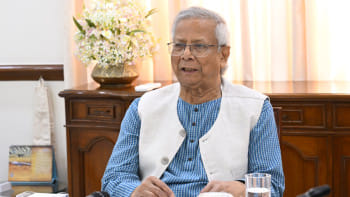Architectural peacekeeping for violent campuses

I have long believed that space is not merely a backdrop to human action but an active participant in shaping it. In Bangladesh, campus violence is usually discussed in terms of political factions, administrative failures, or law enforcement. Rarely do we look at the built environment itself. But walls, gates, corridors, and open grounds are not passive; they are drawn and arranged in ways that either provoke or pacify confrontation. The recurrent eruptions of violence in our public universities have convinced me that the architecture of these campuses is not innocent.
Walking through Dhaka College, with its singular entries, tight corridors, and controlled circulation, I feel the constant undercurrent of control. Chokepoints force bodies into close quarters where encounters are inevitable and often confrontational. The architecture becomes a holding environment for hostility. By contrast, the Fine Arts Institute of Dhaka University (Charukola) offers porous boundaries, shaded courts, and visual transparency. Muzharul Islam's design allows for drifting, lingering, and quiet withdrawal. Even in tense moments, the openness offers people the dignity of choice—whether to join, observe, or leave. One is the architecture of command; the other, of consent.
Our patterns of campus violence thrive in spatial bottlenecks—the single gate where rival groups must pass, the narrow stairwell that compresses bodies, the bare quadrangle where everyone stands face-to-face under a glare. Such places are not neutral; they are accelerants. We can reverse this by thinking of architecture as a form of peacekeeping—not to "design away" conflict, but to create conditions where disagreement can de-escalate.
Architectural peacekeeping begins with multiple permeable thresholds. No campus should have only one way in and out; single gates become territorial flashpoints. Multiple entries with visual openness allow movement to disperse naturally and make it harder for any group to monopolise access. Next, we need genuinely neutral shared commons—shaded, furnished, and publicly visible spaces where students from different groups can occupy the same ground without confrontation. Long, narrow, single-exit passages of corridors make ambush easy, while branching paths, widened passages, and open bays break the grip of territorial control. Visibility is also critical, but it must be without intimidation. Transparency in facades, open courts, and subtle elevation changes can ensure safety through presence rather than through the cold glare of surveillance. Finally, campuses need holding environments—spaces that contain emotional intensity without amplifying it, such as shaded courtyards, verandas, and gardens that invite movement and conversation instead of standoffs.
These ideas are not expensive or technically difficult. They require, instead, the political will to see architecture as part of governance. Without this, we produce an "architecture of inevitability," in which daily movement patterns make confrontation predictable. A single narrow gate compresses life into a geometry of collision; no neutral space means every space is contested. By designing for porosity, multiplicity, and neutrality, we create an "architecture of possibility"—not a guarantee of peace, but the space for it to occur.
Better design will not end campus violence, but it can change its temperature. We cannot continue to place our young people into pressure vessels and then act shocked when they explode. Our universities deserve more than post-riot repairs; they deserve spaces designed to absorb disagreement and hold it without harm. If architecture is a teacher, we must ask what lessons our campuses are giving: the habit of openness, or the reflex of siege? Charukola shows that a campus can be both an institution and a living commons; Dhaka College warns what happens when enclosure of space becomes enclosure of the mind. In that contrast lies the blueprint for peacekeeping—and the urgent need to redraw our lines.
Maruf Ahmed is an architect and lecturer at Khulna University of Engineering and Technology (KUET).
Views expressed in this article are the author's own.
Follow The Daily Star Opinion on Facebook for the latest opinions, commentaries and analyses by experts and professionals. To contribute your article or letter to The Daily Star Opinion, see our guidelines for submission.

 For all latest news, follow The Daily Star's Google News channel.
For all latest news, follow The Daily Star's Google News channel. 







Comments